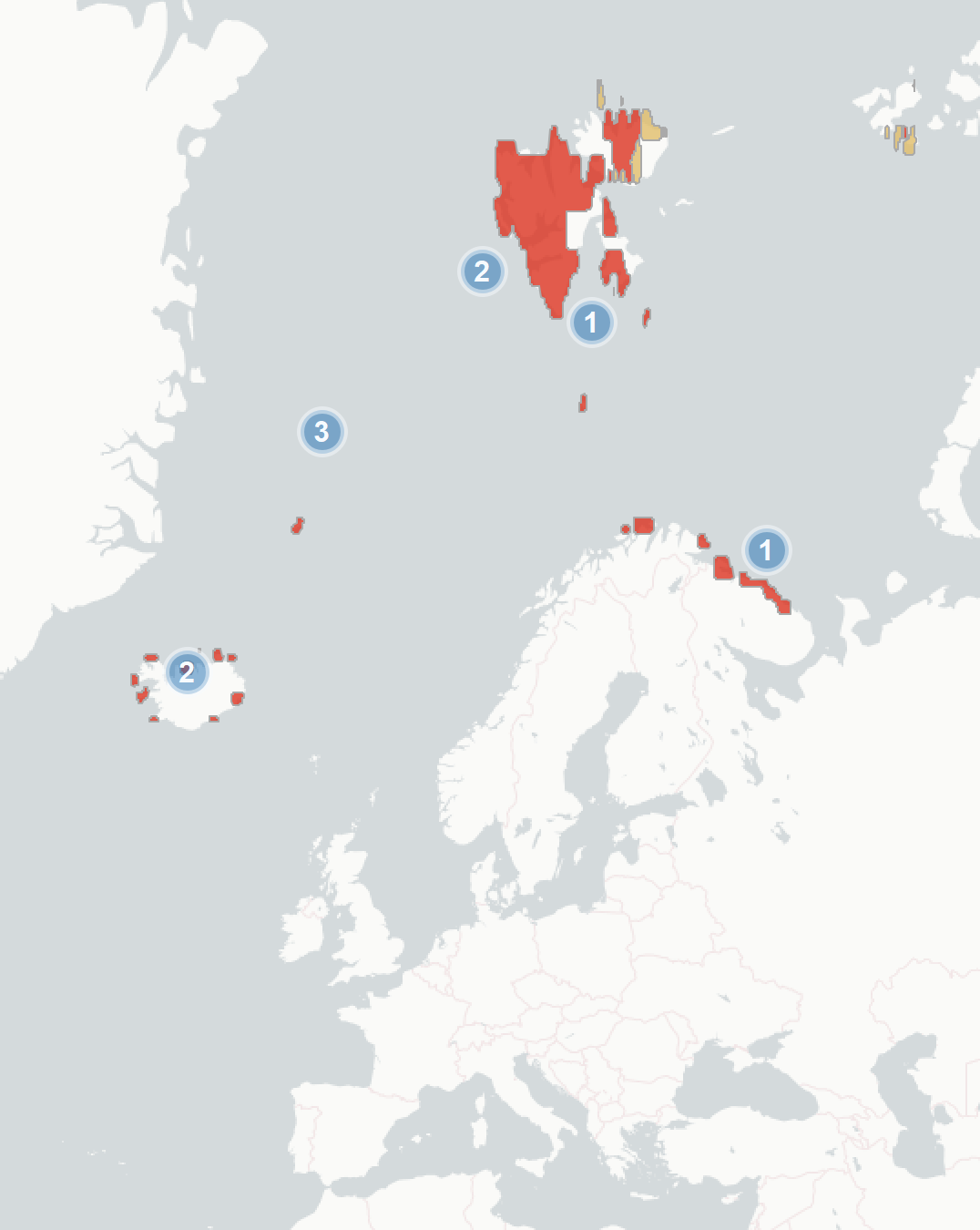Thick-billed Murre (Uria lomvia): vulnerability to climate change
Evidence for exposure
Potential changes in breeding habitat suitability:
-
Current breeding area that is likely to become less suitable (87% of current range)
-
Current breeding area that is likely to remain suitable (13%)
-
Current breeding area that is likely to become more suitable (0%)
Current impacts to Thick-billed Murres attributed to climate change:
-
Negative Impact: Changes in thick-billed murres’ prey availability during the non-breeding season has led to increased mortality
-
Negative Impact: Changes in thick-billed murres’ prey availability during the breeding season has led to decreased breeding success
-
Negative Impact: Thick-billed murre populations are typically smaller and decline in proximity to higher sea temperatures. Mechanism unclear.
Predicted changes in key prey species:
No key prey species are predicted to decline for this species.
Climate change impacts outside of Europe
-
Thick-billed murres are known to be impacted by climate change outside of Europe. Impacts include increased predation by polar bears, increased parasitism by mosquitoes (leading to breeding failure), and increased mortality caused by algal blooms.
Sensitivity
-
This species has a long generation length (>10 years), which may slow recovery from severe impacts and increases population extinction risk
Adaptive capacity
-
While a wide-roaming pelagic species, thick-billed murres have very high site fidelity. Moreover, juvenile dispersal is also very low. It is unlikely that murres will establish new colonies in response to climate change
